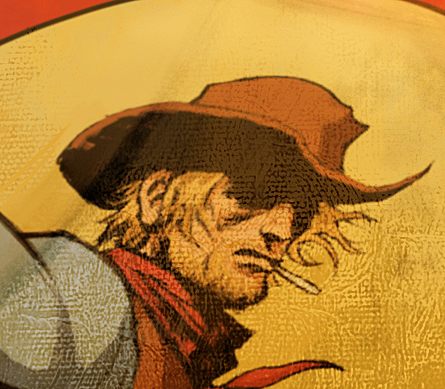![]()
The New Yorker ran an article almost two years ago that details the work of a Vietnamese reporter for Time and other well known media outlets. He was well thought of in media circles and wrote many great articles detailing the toll of the war.
Only problem is he was a spy for North Vietnam:
“Here is Pham Xuan An now,” Time’s last reporter in Vietnam cabled the magazine’s New York headquarters on April 29, 1975. “All American correspondents evacuated because of emergency. The office of Time is now manned by Pham Xuan An.” An filed three more reports from Saigon as the North Vietnamese Army closed in on the city. Then the line went dead. During the following year, with An serving as Time’s sole correspondent in postwar Vietnam, the magazine ran articles on “The Last Grim Goodbye,” “Winners: The Men Who Made the Victory,” and “Saigon: A Calm Week Under Communism.” An was one of thirty-nine foreign correspondents working for Time when the Saigon bureau was closed and his name disappeared from the masthead, on May 10, 1976.
Recognized as a brilliant political analyst, beginning with his work in the nineteen-sixties for Reuters and then for the New York Herald Tribune and The Christian Science Monitor, and, finally, as a Time correspondent for eleven years, Pham Xuan An seemed to do his best work swapping stories with colleagues in Givral’s café, on the old Rue Catinat. Here he presided every afternoon as the best news source in Saigon. He was called “Dean of the Vietnamese Press Corps” and “Voice of Radio Catinat”—the rumor mill. With self-deprecating humor, he preferred other titles for himself, such as “docteur de sexologie,” “professeur coup d’état,” “Commander of Military Dog Training” (a reference to the German shepherd that always accompanied him), “Ph.D. in revolutions,” or, simply, General Givral.
We now know that this is only half the work An did as a reporter, and not the better half. An sent the North Vietnamese a steady stream of secret military documents and messages written in invisible ink, but it was his typed dispatches, now locked in Vietnam’s intelligence archives and known to us only through secondhand reports, which will undoubtedly rank as his chef d’oeuvre. Using a Hermes typewriter bought specially for him by the North Vietnamese intelligence service, An wrote his dispatches, some as long as a hundred pages, at night. Photographed and transported as undeveloped rolls of film, An’s reports were run by courier out to the Cu Chi tunnel network that served as the Communists’ underground headquarters. Every few weeks, beginning in 1952, An himself would leave his Saigon office, drive twenty miles northwest to the Ho Bo woods, and descend into the tunnels to plan Communist strategy. From Cu Chi, An’s dispatches were hustled under armed guard to Mt. Ba Den, on the Cambodian border, driven to Phnom Penh, flown to Guangzhou (Canton), in southern China, and then rushed to the Politburo in North Vietnam. The writing was so lively and detailed that General Giap and Ho Chi Minh are reported to have rubbed their hands with glee on getting these dispatches from Tran Van Trung—An’s code name. “We are now in the United States’ war room!” they exclaimed, according to members of the Vietnamese Politburo.
This Vietnamese media darling even helped plan the Tet offensive which killed over 4500 US & South Vietnamese troops:
An comes into focus again at the Tet Offensive, the simultaneous attack on more than a hundred South Vietnamese cities and other targets during the New Year’s ceasefire of 1968. Planning for the offensive had begun two years earlier, when the head of An’s intelligence network, a colonel known by his nom de guerre, Tu Cang, moved from the jungle into Saigon. Tu Cang was a famous cowboy, a hearty, affable man, who packed a pair of K-54 pistols and could plug a target at fifty metres with either his left or his right hand. A former honor student at the French lycée in Saigon, Tu Cang had lived underground in the Cu Chi tunnels for so many years that by the time he reëntered Saigon he had forgotten how to open a car door. An replaced Tu Cang’s jungle sandals with new shoes and bought him a suit of clothes. Soon the two men were driving around town in An’s little Renault 4CV like old friends.
Pretending to be chatting about dogs and cockfights, they were sighting targets for the Tet Offensive. Tu Cang proposed attacking the Treasury to get some money. An told him the Treasury was the wrong target—“They only hand out salaries there.” An said a better target was the courthouse, where lots of gold was stored as evidence in the trials of South Vietnam’s legion of burglars and smugglers. He advised Tu Cang to bring an acetylene torch.
Tu Cang isolated twenty targets in Saigon, including the Presidential Palace and the United States Embassy. He personally led the attack on the palace, where fifteen of the seventeen members in his team were killed outright. He himself barely escaped to a nearby safe house, and he hid with his two pistols held to his head, vowing to kill himself rather than be captured. The following day, he and An were driving around the city again, this time counting the bodies of the Vietcong soldiers who had died in the attack.
Has the press learned from this experience when using the local stringers?
Let’s ask Jamil.

See author page

